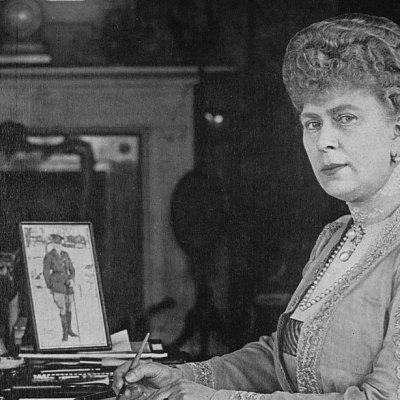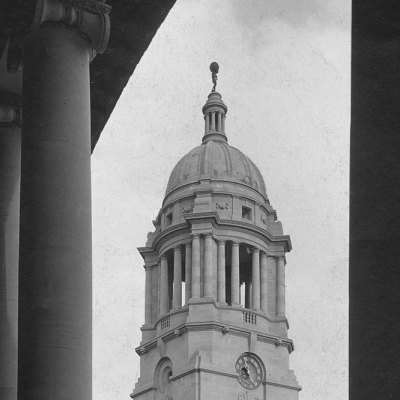As I made my way through the throng of visitors to the King’s Gallery for its opulent new exhibition, I overheard a woman observe: ‘Well, one thing you can say about the Royals is they never do anything by halves.’ This was certainly the case during the Edwardian period, which, judging by the material on display here, was marked as much by excess as it was by elegance. The press release promises that visitors will be ‘immersed in the glamour and drama of the Edwardian era’, and the exhibition follows the popular notion that the period was one long enjoyable summer party eventually and brutally rained off by the First World War. The Edwardian age is usually considered to encompass not only the nine years that Edward VII sat on the throne but also the first four years of the reign of his successor, George V. Focused on both monarchs and their consorts, Alexandra and Mary, the exhibition extends this period further, starting with the marriage of the future Edward VII in March 1863, when he was still Prince of Wales, and ending with George V in the role of ‘Chief Mourner’ at the funeral of the Unknown Warrior in November 1920.
The exhibition is arranged in several thematic sections, showing both the public and private aspects of the royal couples’ lives. ‘The Edwardians at Home’ focuses on Edward and Alexandra’s town and country residences, Marlborough House and Sandringham. The latter is described as ‘a private retreat where the family could display their personal art collections and family mementos’, examples of which are shown in one of the large galleries and in the smaller cabinet rooms. Other rooms reflect the more formal aspects of royal life, including state occasions, while a section devoted to the two couples’ travels abroad includes assorted artefacts that they brought back with them.
Queen Alexandra’s Coronation Dress (1902), designed by Morin Blossier and embroidered by Manick Chand. Royal Collection Trust. Photo: Jon Stokes; © Royal Collection Enterprises Limited 2025
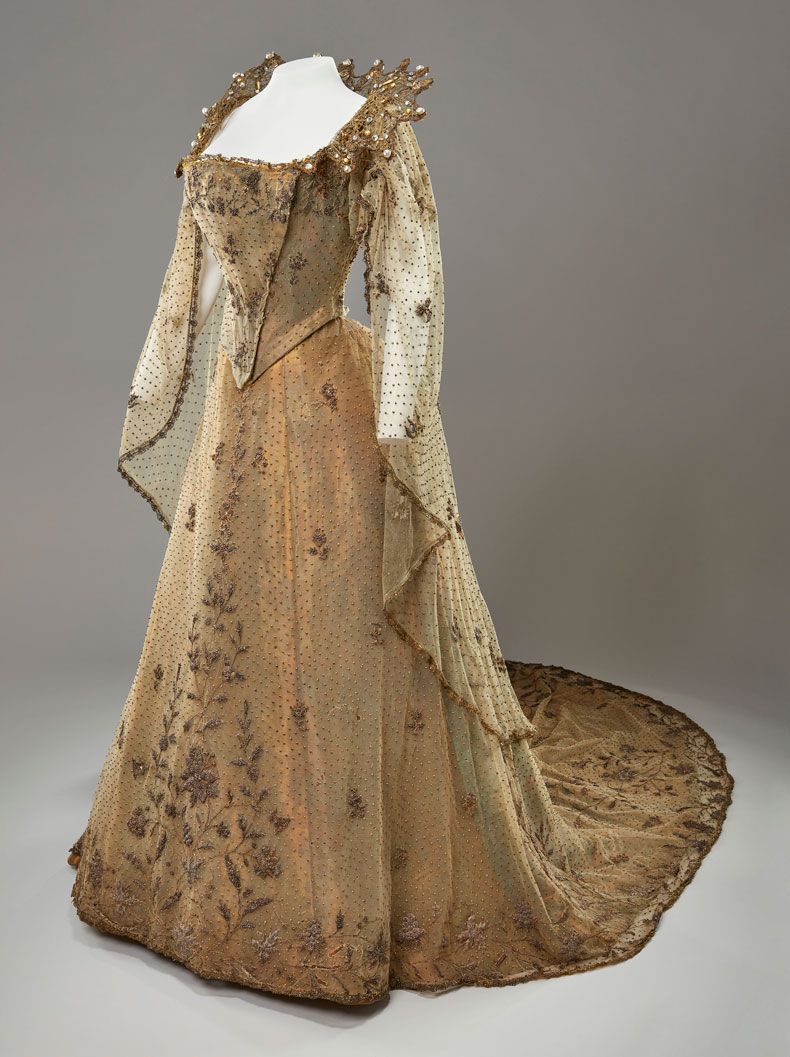
One of the most personal and enchanting objects in the exhibition is a screen constructed in the 1890s by an unknown maker in order to display cabinet cards of people in Edward and Alexandra’s circle, which was considerably less stuffy than that of their successors. Writers, actors and musicians take their place alongside family members, people in the royal household, politicians and military figures. Elsewhere there is little sense of individual taste and the items on display (which are often identified merely by the maker rather than the person who commissioned, bought or was given them) seem more like the contents of a public museum than a private collection. This raises the question of how far the royal couples felt that they were collecting for the crown rather than for themselves as individuals. Most major collectors leave their artworks to their descendants or to a museum or gallery, but even objects that were acquired privately by Edward, Alexandra, George and Mary now form part of the Royal Collection ‘held in trust by The King as Sovereign for his successors and the nation’.
This is the kind of consideration that might have been addressed in a catalogue, but there isn’t one. Since many of these items are unlikely to be seen again for some time, the decision to provide no published record of the exhibition is inexcusable. A catalogue might also have included written material that gave more heft to this accumulation of some 300 objects and provided a proper context by describing what was going on in Britain at this time outside the royal court. Instead, the gallery is providing a ‘free multimedia guide narrated by Downton Abbey’s Hugh Bonneville’, which suggests that crowd-pleasing rather than anything more searching is the guiding principle here.
King Edward VII (1902), Luke Fildes. Royal Collection Trust. © Royal Collection Enterprises Limited 2025
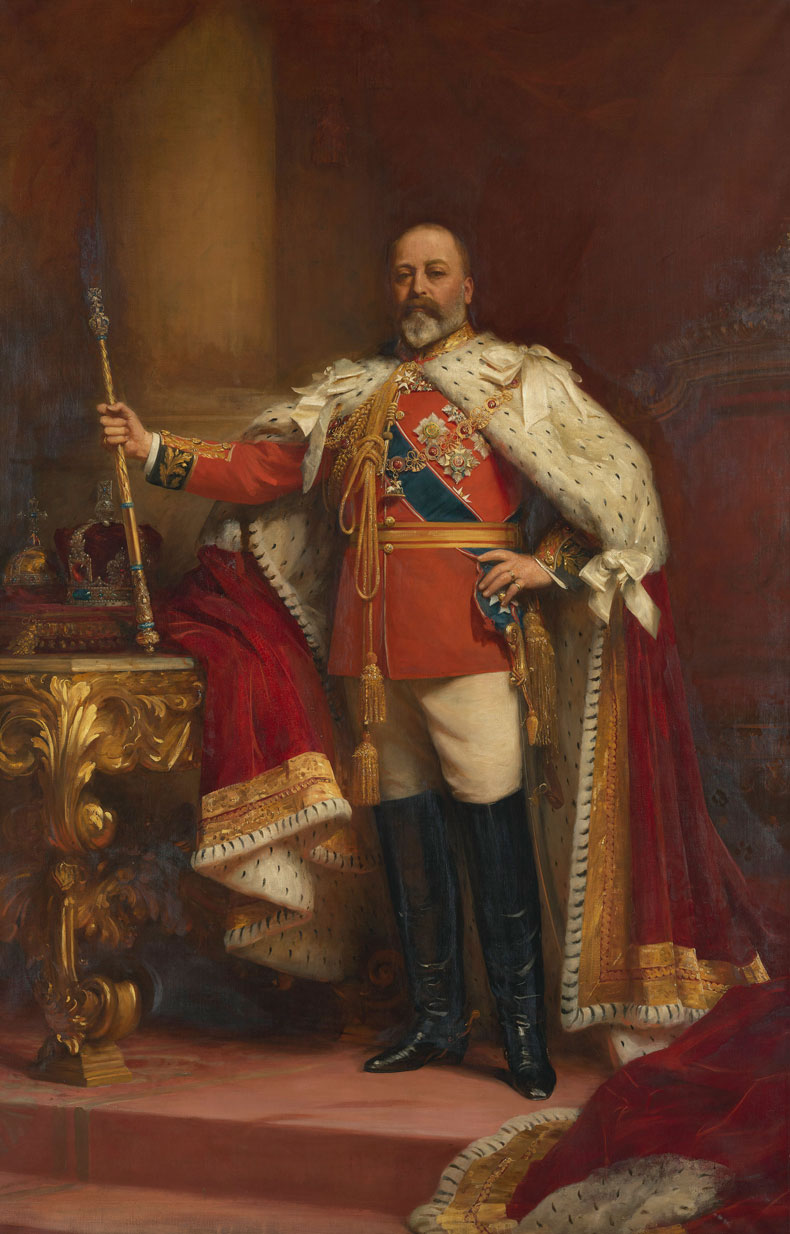
Given the more or less unlimited funds available, one might expect the era’s royal patrons to have selected the very best painters for both portraits and pictures depicting such events as marriages and coronations. On the whole they did not, apparently preferring the painterly equivalent of waxworks to anything more characterful. This is very clearly borne out in a room containing huge formal portraits of Edward, Alexandra and Mary by Luke Fildes, François Flameng and William Llewellyn, which are hung to their great disadvantage beside two smaller and much finer paintings of less exalted members of the Royal Family by Philip de László and John Singer Sargent. George – who is generally regarded as the least cultured of the quartet, preferring sailing and stamp-collecting to anything more ‘arty’ – fares rather better in a small group portrait by John Lavery, a study for the large painting in the National Portrait Gallery.
The conflicting demands of aesthetic value and public record are another topic the exhibition fails to address. In the same room are three canvases of state occasions by Laurits Tuxen, who had been painting the Royal Family since 1887 after being introduced to them by his fellow Dane, Alexandra. In 1902 he was appointed ‘Special Artist to the Coronation’, in which role, we are told, he ‘created numerous important ceremonial and dynastic paintings with a naturalness and charm that belie their complexity’. This is a somewhat generous assessment of his talents. His Garden Party at Buckingham Palace, 28 June 1897, which apparently took three years to paint, is a perfectly competent depiction of what the label describes as ‘a joyous, bustling occasion’, but in technique and characterisation it hardly measures up to the work of, for example, William Powell Frith. One could argue that Frith tended to depict a much wider and livelier variety of classes, but even when painting royal occasions such as his 1865 canvas of the marriage of Edward and Alexandra (also in the Royal Collection, but not on display here), Frith manages to depict each of the picture’s huge number of people as individuals. While there is a certain liveliness to Tuxen’s rendering of the pages in The Anointing of Queen Alexandra at the Coronation of King Edward VII (1902–03), the faces of some of the women attendants appear to have come from a catalogue.
The Marriage of George, Duke of York, with Princess Mary of Teck, 6 July 1893 (1894), Laurits Tuxen. Royal Collection Trust. Photo: © Royal Collection Enterprises Limited 2025
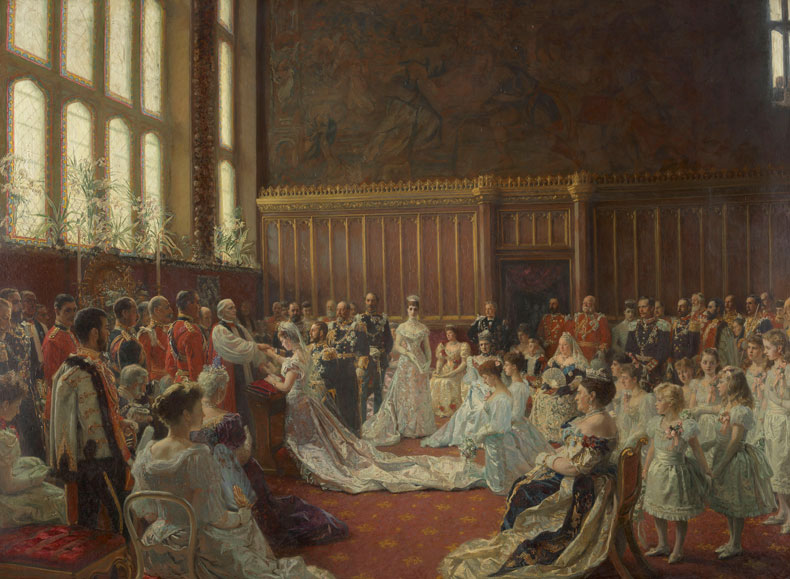
Even the paintings by well-regarded artists are often inferior works. It seems extraordinary that any admirer of Burne-Jones would have selected the three insipid pictures on display, while a mildly titillating painting of a naked wood nymph ‘admiring herself in a forest stream’ turns out (astonishingly) to be the work of Gustave Doré. A lovely watercolour by James Guthrie of girls gathering windfalls in an orchard (c. 1888) comes as something of a surprise – though it was presented to Edward rather than chosen by him. The Royal Family’s long-standing affection for horses and dogs is well represented by charming paintings of both, though none are as good as those commissioned from Edwin Landseer by Queen Victoria. More eccentric are the figurines of the birds and animals of the Sandringham estate that Edward commissioned Fabergé to produce in 1907. This was ‘by far the largest order ever placed through Fabergé’s London branch’ and includes a pink aventurine Norfolk sow with rose diamond eyes and a crow made of Kalgan jasper, obsidian, aquamarine and silver gilt. Some of the decorative objects acquired by the royal couples, such as a Cartier desk clock of 1911, are the finest of their kind.
Crow (c. 1907), designed by Henrik Wigström for Fabergé. Royal Collection Trust. Photo: © Royal Collection Enterprises Limited 2025
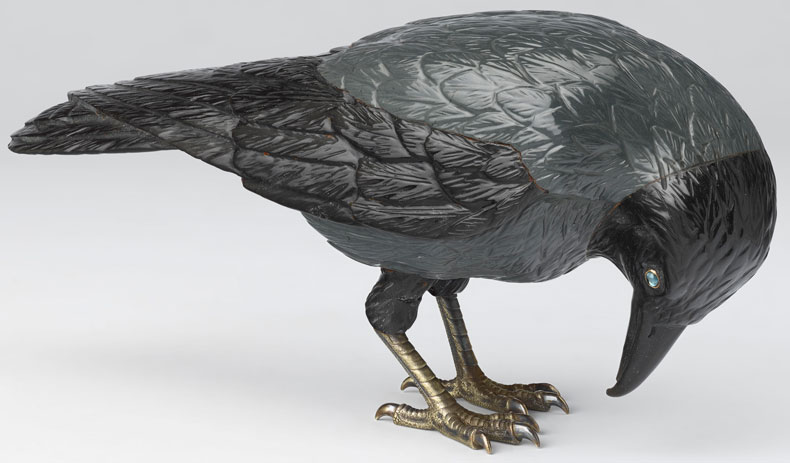
Perhaps the most extraordinary piece of furniture on show as an example of personal taste is a gilded rococo-style display cabinet of around 1875, which Edward and Alexandra had installed at Sandringham. The curators suggest that ‘the effect [of the piece] is enhanced with the addition of small 18th-century porcelain figures by the Dresden factory of Meissen, including an orchestra of playful monkeys,’ omitting to mention that it is also crowned by a large swan. Form thwarts rather than follows function in this extravagantly ugly object: the design of the cabinet overwhelms anything that might have been displayed in it, including the rather understated pieces from a Royal Copenhagen breakfast service that are being shown here.
Much better porcelain from the same factory, less distractingly presented, are some plates from a 19th-century dessert service given by ‘the Ladies of Denmark’ to Edward and Alexandra as a wedding present. These feature beautifully painted decorations based on the Flora Danica, a multi-volumed record of Denmark’s wildflowers. Amid much that is merely showy, the Kokoshnik Tiara of 1888, based on a traditional Russian headdress but fashioned in gold and diamonds, is genuinely dazzling. A large Sèvres vase with a stylised floral design of 1913 is uncharacteristically forward-looking, and some small enamelled Fabergé frames containing photographic portrait miniatures are exquisite. All in all, however, this exhibition resembles a state banquet intended more to astound by its lavishness than provide anything genuinely nourishing, and one leaves it merely surfeited.
The Kokoshnik Tiara (1888), attributed to R. & S. Garrard. Royal Collection Trust. Photo: © Royal Collection Enterprises Limited 2025
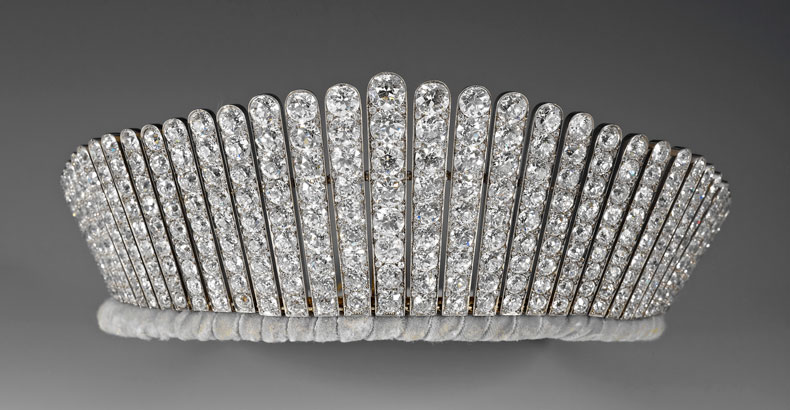
‘The Edwardians: Age of Elegance’ is at the King’s Gallery, London, until 23 November.

